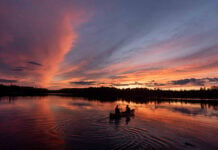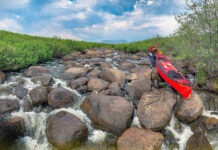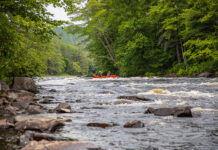The moose is under threat in the mosaic wilderness in far northern Minnesota, close to the Canadian border. It’s estimated moose once numbered 10,000 in the state, but the population fell by 64 percent more than a decade ago.
Paddle-powered research on precipitous moose population decline
Seth Moore is the lead biologist for the Grand Portage Band of Lake Superior Chippewa and he’s become a leading voice on Minnesota’s moose. His scientific work has focused on sustaining the iconic species for the band’s annual subsistence moose hunt, which has been conducted for thousands of years. The band calls this Seventh Generation Planning—a process of protecting the moose so future generations can continue the same subsistence practice as their great-grandparents. It’s a vital cultural thread connecting the modern-day band to their ancestors. As subsistence hunting has become increasingly uncommon as the moose population dwindled, Moore and fellow biologists have been tasked to protect the moose.
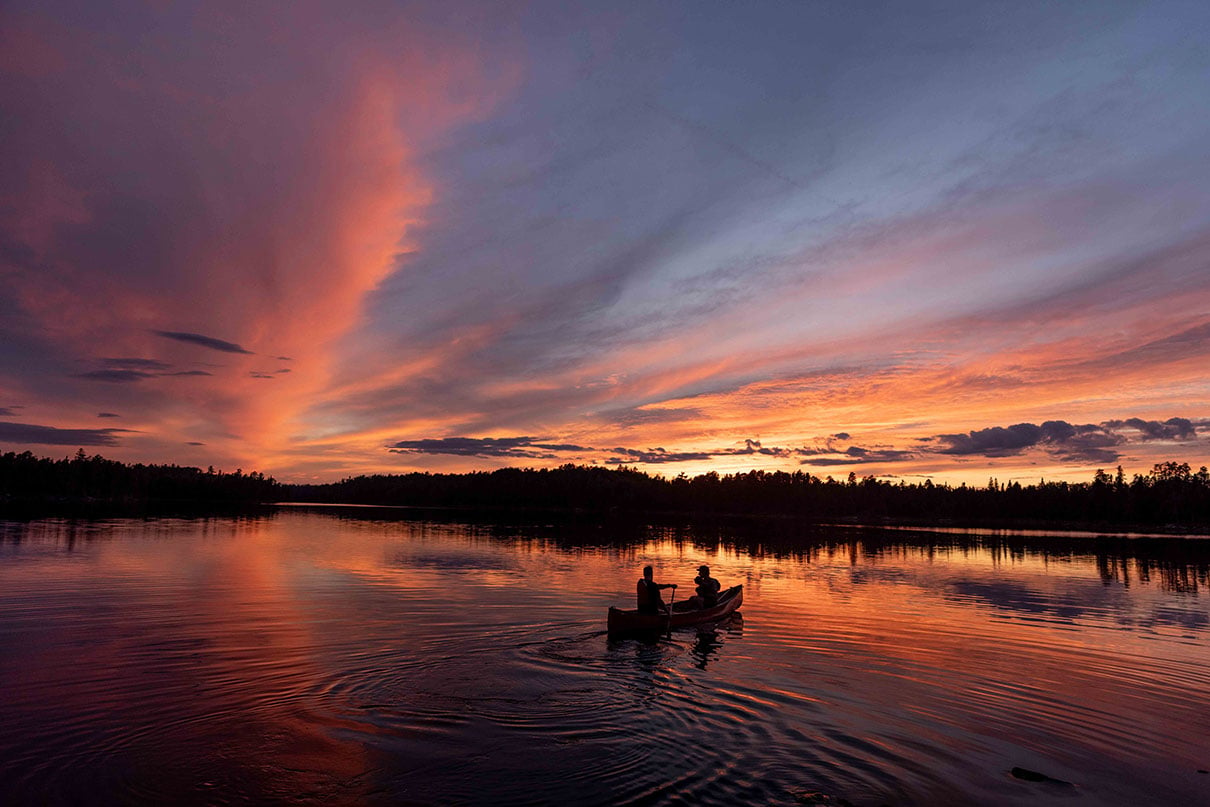
Last year, I connected with Moore to explore the moose decline from a scientific and native perspective as part of a two-year-long film and photo project. Together, we launched a 10-day canoe route into the borderlands between Canada and Minnesota, reported to contain healthy populations of moose but in low numbers. Alongside U.K. filmmaker Jamie Barnes and Quebecois expedition canoeist Martin Trahan, the journey aimed to film and photograph the moose in their natural habitat as we learned from Moore about ecosystem health and threats facing North America’s second-largest land mammal.
Echoes of the moose call
In August, our group of four watched from a small sandy beach as our floatplane thundered off into the distance behind a wall of vaporized water produced by the engine thrust. Within the hour, our canoes pushed upstream through small rivers interlinking this wilderness’ vast peppered lake systems. Our plan was to paddle into the quietest and most marshy corners in this wilderness paradise at dawn and dusk. Amongst the swamps and flooded high grass is where moose would frequently travel in the tangled habitat and wild they called home.
Our route took us through swamp systems, lengthy portages and immense lake and island regions. Day after day, we probed and paddled into motionless swampy bays. In shallow waters, Moore often pointed and whispered to me, “Moose tracks underwater,” his trained eye spotting sign of a used trail and frequented local habitat. In my canoe, Moore mimicked a moose call using a half-cut white bleach bottle. The echoes and acoustics from his call reverberated in the immediate area and throughout miles and miles of dense, impenetrable forest, only to bounce back to the drifting canoes. The four of us would sit and wait for the return call of a nearby bull moose or female cow. Each time, silence was the only response.
The repetition of call and no response permeated each morning while paddling into the tangerine colors of sunrise, and each evening, paddling under the purple hues of sunset. Around the fire each night, eating fish caught by rod and line, the haunting sound of loons echoed around the lake. Packs of wolves howled, and we howled back from the shoreline. Moore estimated two active packs surrounded us. I uncovered wolf scat on a long, narrow portage trail. On closer inspection, Moore noted the scat predominantly consisted of moose calf hair.
In moments like this, Moore transformed from paddler to biologist. He reached into the depths of research and data he’d uncovered so far, sharing the grim story he felt was unfolding for the moose if left to the natural cycles. He told us in recent decades, warming winters have allowed white-tailed deer to migrate farther north into moose territory. As part of the natural predation cycle, wolves followed the white-tailed deer, only to discover the easy pickings of moose calves, derailing the repopulation of the next generation.
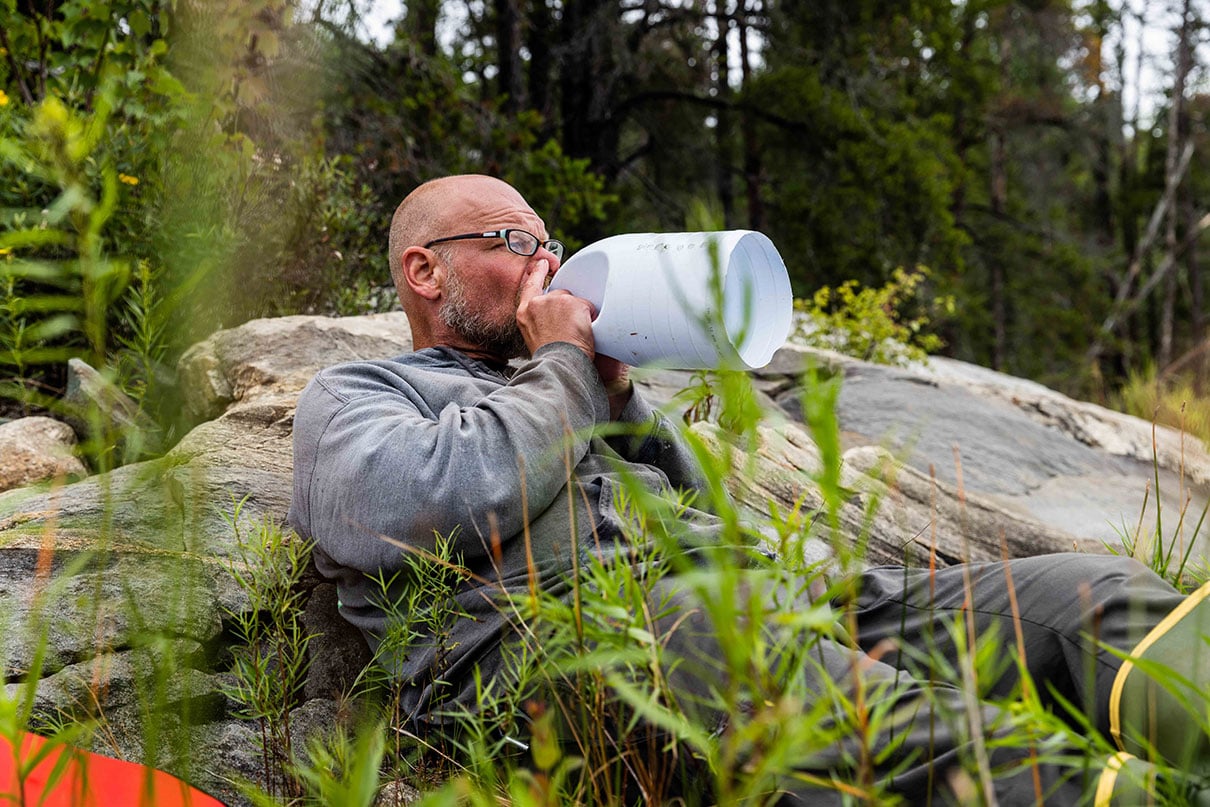
But one of the primary sources of adult moose fatalities has been the arrival of brainworm, also brought by the deer. The parasitic roundworm inhabits the brain cavity and does not affect white-tailed deer. But in moose, it leads to a lack of sensory perception, deafness, weakness and ultimately, paralysis and death. According to Moore’s research, brainworm has been killing up to 30 percent of the adult moose he’s studied over the past 18 years at the tip of Minnesota’s Arrowhead region.
Additionally, shorter and warmer winters mean more ticks survive when previously they would flounder under snow cover. Biologists have found moose covered in more than 100,000 ticks. And some moose will scratch themselves bald against trees to relieve themselves of the irritating ticks, scouring off large chunks of the fur needed to stay warm.
Ghost tracks leading into the future
According to Moore, these are the likely reasons moose populations declined and haven’t recovered. Fundamentally, a changing climate is at the heart of the issue.
Perhaps it’s not surprising on an expedition investigating the decline of the moose population, after nine days and nights, we tiredly paddled two canoes into the take-out location with not a single sighting. The team was quietly disappointed. After every effort made, we’d seen only ghosts and footprints.
Six months later, in February, Barnes and I joined Moore for fieldwork in Minnesota to continue our film and photo project. We took part in a helicopter population survey and witnessed Moore collar a moose, take blood, tick and body data, and then carefully release it. The awe of being so close to a moose—weighing between 800 to 1,300 pounds and majestic even in its drugged stupor—was overshadowed by the record-breaking winter warmth in the region, highlighting the challenges this iconic species continues to face.
Ian Finch is a former U.K. Royal Marine Commando, a photographer and expedition guide. Find him online at @ianefinch.
Dawn patrol searching for moose. | Feature photo: Ian Finch


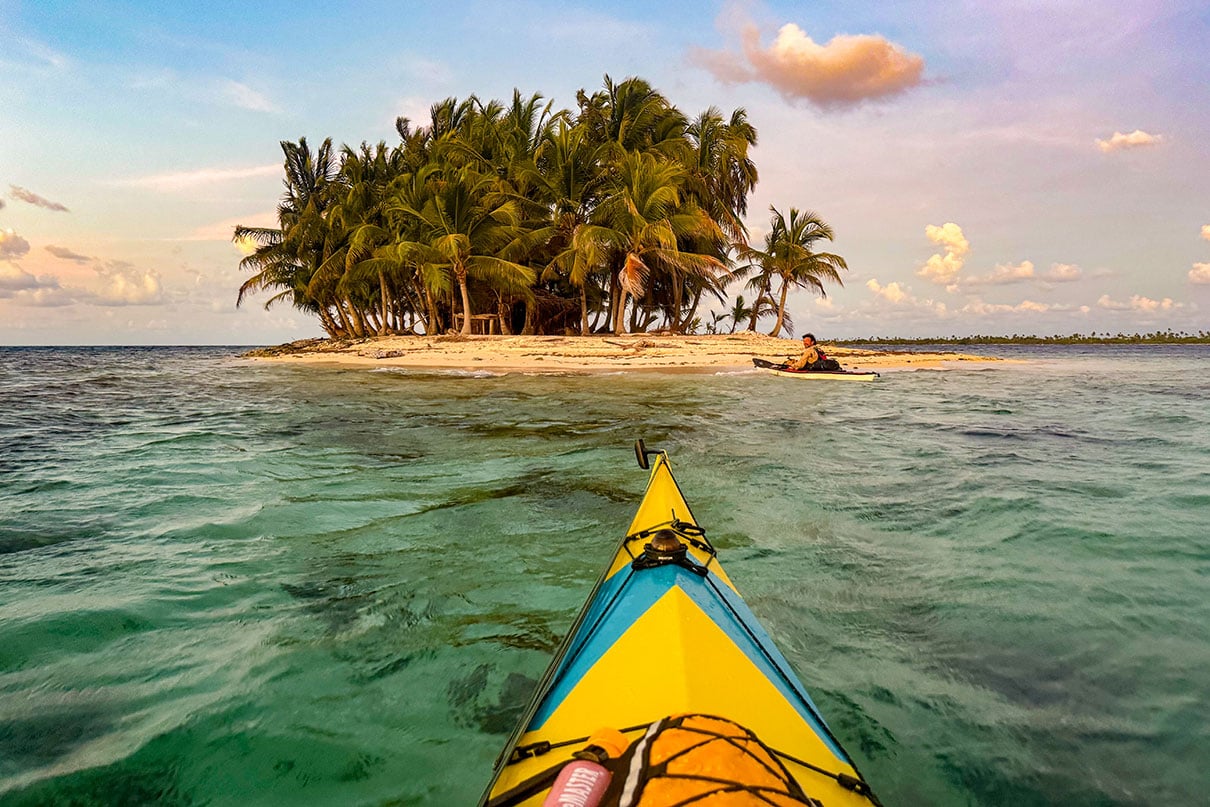

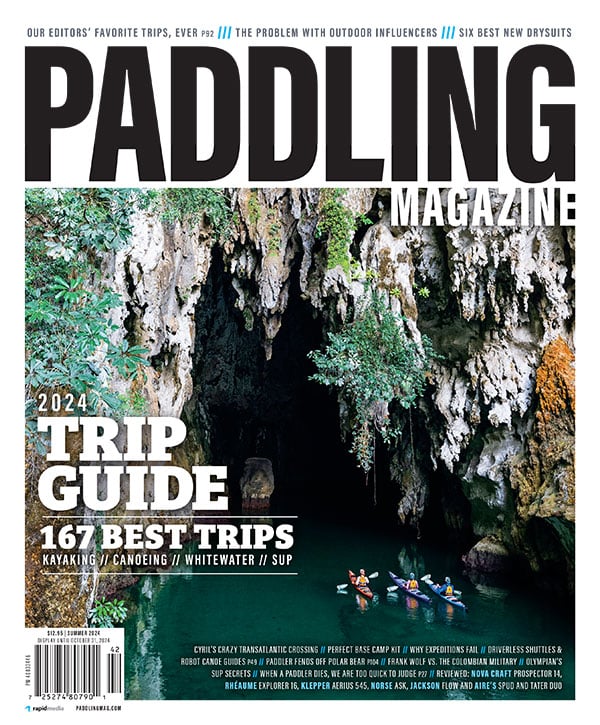 This article was first published in Issue 72 of Paddling Magazine.
This article was first published in Issue 72 of Paddling Magazine. 
